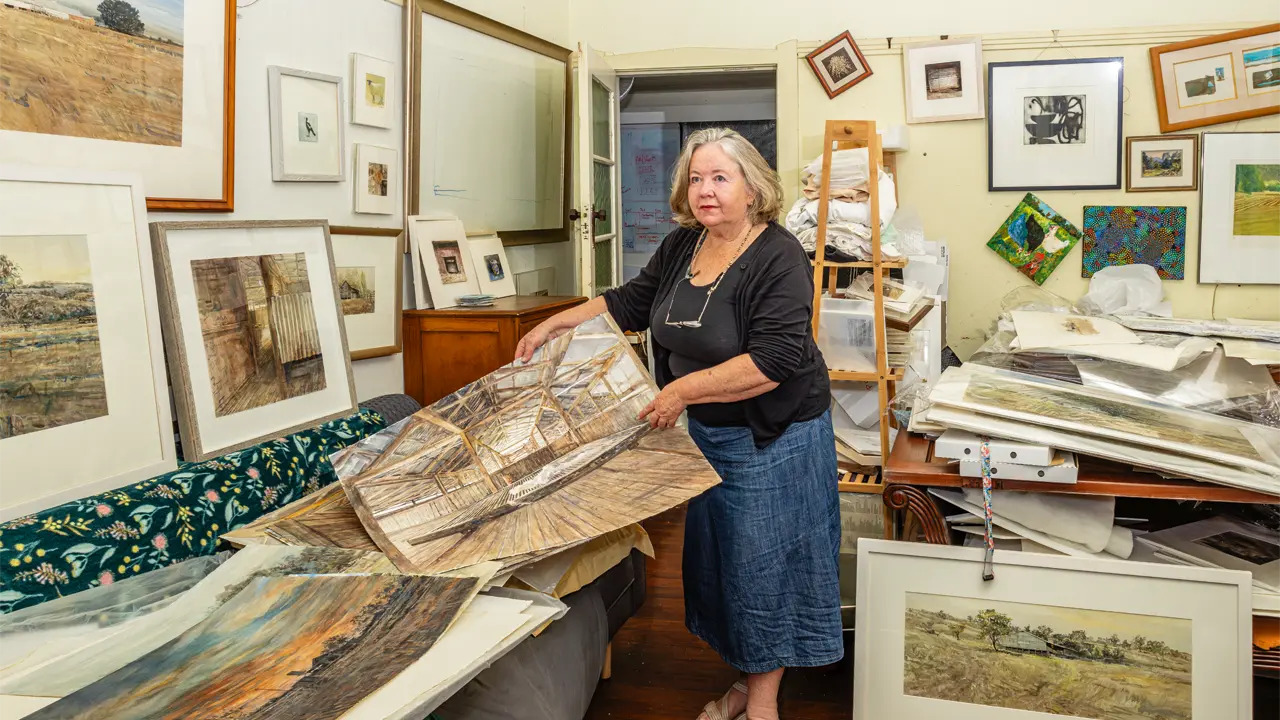Thanks to efforts to reduce waste on a Tasmanian rhubarb farm, the old-fashioned vegetable is back in favour with a range of juices and syrups.
Story By Greg Sweetnam
When Holger Ostersen saw some of his cousin’s rhubarb crop classed as seconds and discarded as compost, he thought there had to be a better use for the edible crimson stalks. “Stalks were graded as seconds because of minor blemishes or poor colouring and that made me start thinking there had to be another use for them rather than putting them back in the paddock or on gardens as compost,” the innovative Tasmanian businessman says. “I started experimenting with my recipe for rhubarb wine to see what I would come up with.”
His insight and access to fresh rhubarb proved a potent combination with Rhu Bru the result – a new drink made by steaming the rejected stalks and bottling the juice. Holger and partner Jan Hughes operate an historic bed-and-breakfast in the rural service centre of Scottsdale and it was here that the early testing was done with the help of friends, family and guests. Both have a love of food and Jan also uses rhubarb for relish made to her own secret recipe and sold in select tourist outlets.
It took six months of trial and error to achieve the light rhubarb juice that is now available across the state and is soon to be distributed on the mainland. The distinct 275ml pinkish bottles are promoted as the fresh taste of Tasmania and have hit a sweet spot with consumers.
A former butcher shop has become the Rhu Bru bottling plant and a tour of the back-street site reveals Holger’s talents go well beyond tasting and brewing. The building has been renovated to make production as efficient as possible for a small team and to meet council food-production regulations. Large steaming tanks full of juice are in the old boning room near the bottling line while other smaller rooms, including the cool room and counter area, are used for storage and packing. All improvements, including steaming, labelling and stamping systems, have been designed and installed by Holger.
A thousand kilograms of seconds becomes 450 litres of extracted concentrated juice, which makes 1000 litres of ready-to-drink juice or provides 3500 bottles of the drink.
About 20 minutes out of town is the main farm where the rhubarb is grown by Jerrod Nichols. With more than 40 hectares of rhubarb, Jerrod is Australia’s largest producer of the vegetable. He supplies Woolworths and gives a wry grin when asked about the popularity of Rhu Bru. “The colour is aesthetically pleasing and I think if people realise it’s half healthy it might take off,” he says. Just a few hectares were originally grown in a trial in 2006 before expansion. Now, yield can reach as much as four tonnes each week, with plans to increase that to 10–15 tonnes. This year the crop will be harvested every 10–12 weeks.
This story excerpt is from Issue #71
Outback Magazine: June/July 2010









